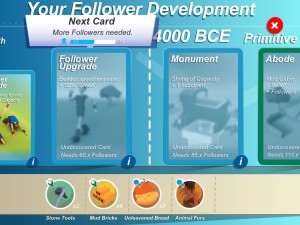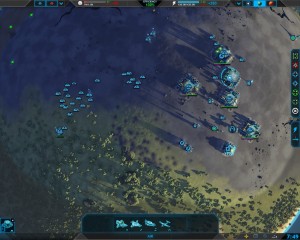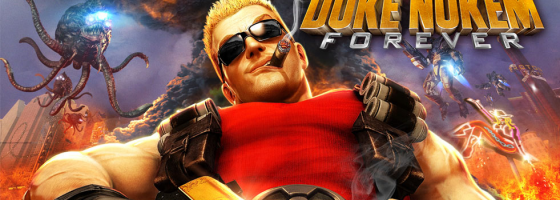Game development is as much an art as it is a science, and getting the two parts to work right can be incredibly difficult. With the rise of crowdfunding and kickstarter, we’re seeing many first-time developers and groups try to make it big with their “dream idea.” However, even with having the funding and a team behind you, there’s no guarantee that you will be able to make the game that you want.
For fans, this also means being very critical of news out of developers and picking up on some of the major red flags that usually spell doom for a game’s development.
1. Core Concept not set:
Many kickstarters and first-time game ideas are built around a basic concept that is then supposedly going to be fleshed out for real once development begins. As we’ve talked about, no video game is the same at the start of development and at the end; things change and designs have to be updated.
The big red flag in this point is when the game’s core concept keeps getting changed. We’ve talked numerous times on the cast about the concept of harmonizing game design, or when everything clicks in a game. That “click” requires a set foundation of your core design, if that isn’t working, then your whole game is in trouble.
With crowdfunding, no one expects your game to be 100% thought out, but they expect that the vision that you promised should be the vision that is in the final version. With Godus, no one wanted a mobile free to play title which was not the promise of the original kickstarter, but that’s what 22 Cans decided to make.
This is why it’s important to wait to go onto kickstarter until you have things straighten out; ideally, you should have a prototype build, concept trailer, or early version of the game ready to show people. One of the hardest things about game development is the fact that most game designs don’t start coming together until the game is almost done; thanks to the final stages of refining and polishing the game’s design.

When your core design is constantly getting changed, it’s impossible to make any kind of forward progress on your game
The more complex of a design you’re going with, the earlier you need to get the core foundation setup, because having to change that in a multi system game is like toppling a house of cards for your design.
When we hear from game designers that they’re changing the core vision for whatever reason, that’s not a good sign for the future of a game; more so if it happens later in the game’s lifespan.
Basically, if the developer is changing their core gameplay system 50% through production, that’s as sure a sign as anything that there is trouble.
2. Flip-Flopping:
An extension of the last point, another sign when a game’s development is in trouble is when the developers are making numerous grand changes throughout the design. These changes can mean everything from retail to free to play, changing game engines, adding in new systems, removing old systems etc.
In the early stages of a game’s development, it’s common for systems to be added or removed, that’s just the nature of the beast, but when a game is no longer in alpha and the developers are still trying to build new systems, that’s not a good sign. The reason is that the longer into a game’s development that systems are being torn apart or added, the harder it’s going to be to properly implement everything in. This is why it’s common to have changes of this kind during the alpha stage of your game, and then have the game’s foundation locked down for the beta period and beyond.
Typically speaking, the alpha period of a game is when you’re still figuring out the game’s systems and the overall design that you want to include. Once you get to beta, the game’s systems should be done and you should be focusing on fine-tuning and polishing the mechanics.
With Duke Nukem Forever, we saw what happens when a developer keeps flip-flopping. Reports and interviews talked about how the game kept changing its scope over the years. In the time it took them to make one game, they could have easily made five or six different titles.
We’re seeing this problem more and more these days thanks to scope creep from kickstarter and stretch goals. You may think having 20 different stretch goals on your project is a good idea, but when it comes time to actually add all that in, good luck with keeping your original vision.

Scope creep and constant changes to your game’s plan can cause a project to get out of control very quickly
Another big problem here is that the more you change the game’s vision, the more money it’s going to cost you.
With Kickstarters and getting a set amount of funding from your fans, every delay and change means that you’re taking more from the original development timeline and funding.
This can lead into an ever downward slope of making changes and losing money until there is no more funding left.
While these two points are those that can easily be seen from the outside by fans, it’s the next point that has doomed more projects than most.
3. Mismanaged Team
There have been countless books, webinars and conferences all built around what it takes to make an effective team, and there is no way we’re going to solve that here.
The more people working on a project, the harder it becomes to manage everyone and make sure things are on task. One of the great things about Indie development is how you can do a lot with a very small team. However, it’s very easy for things to go off the rails, especially for first time developers.
Maybe someone isn’t pulling their weight, or the project is delayed multiple times, or there is a schedule dispute. So many things can go wrong at the management level when it comes to making a video game, and why it is important to have someone who understands managing a project and group.
Going back to point one, a mismanaged team can also impact the game’s design. There is the classic phrase of “too many cooks,” when a team can’t get behind a singular vision and everyone wants to be in control. Building a game requires both a team and someone who needs to take charge; very rarely will a team of all leaders be able to produce something of high quality.
Speaking with Harebrained Schemes’ Mitch Gitelman several times, he talked about how his studio has done its best to adhere to a schedule for game development; making sure that they add in everything that they want without going beyond the scope of the project. In turn, it has allowed them success with releasing multiple titles and a proven track record when it comes to multiple kickstarter projects.
While it is possible to pull through and make something with a team that is having trouble, if your game’s development is described as a soap opera, that doesn’t bode well for the future of your studio. A successful studio needs effective management in order to be run properly. As there are multiple ways of making a video game, there is still no one proven way of managing a team or a studio; we’re not going to solve this one here.
For our final point, it’s perhaps the hardest one for a developer to face.
4. The Drive is Gone
Making a video game is a very emotional process; taking untold number of hours, money and energy to get it done. While we all want to be in the industry, there can be that point where you are just drained and tired of the project. We see this burnout in any creative field, where the person just doesn’t want to do it anymore and they’re depressed. There are days when you just don’t want to get out of bed and want to sleep forever; we all have those periods.
With indie games this can be all the more frustrating, as it’s usually just you or a few other people working on the project.
This can happen for any number of reasons: The programmer left and now you have no one to build the game, money is getting tight, the game’s design is just not coming together and many more.
Usually speaking, when things are going well, it’s easy to ride that wave all the way through the game’s development. However, when the going gets tough, you can enter a downward spiral that can kill the game and even your chance at still staying in this industry.
If the last point was hard to solve, this one is simply impossible. I could try and give an emotional speech like they do in sports movies, but that’s not going to help you. Sometimes a project is just not going to work, no matter how hard you want to admit it. In the same breath, if you truly believe in your project and want to get it done, then sometimes you have to push through that wall, as no one else is going to make your game.
Keeping it together:
Making a game is never easy and no two games are the same. Even with these four signs, there is still a chance for a team to produce something marketable. However, with each red flag we see on a project, the less chance for that to happen.
One thing is for sure, when fans see any of these four issues, they can tell that the ship is taking on water; whether or not the developer can right things from that point is the big question. While we hear plenty of stories of Indie developers succeeding, it’s always important to remember that not everything goes your way, and to make sure that you have everything planned in order to mitigate these risks.
If you enjoyed this post, please consider donating to the Game-Wisdom Patreon Campaign. Your donations will help to bring back fan favorite features and expand the content that I can put out.



